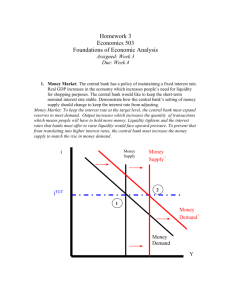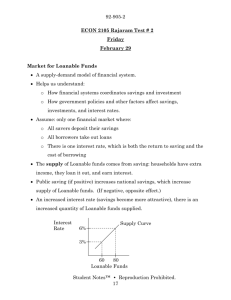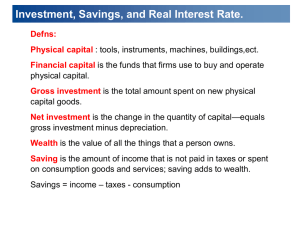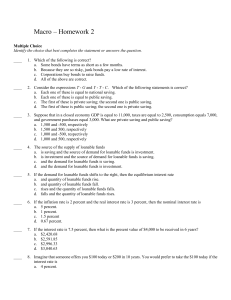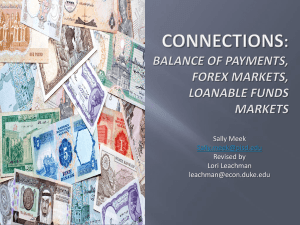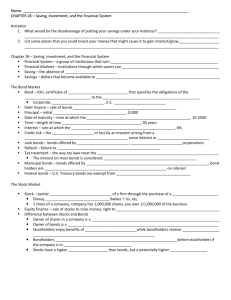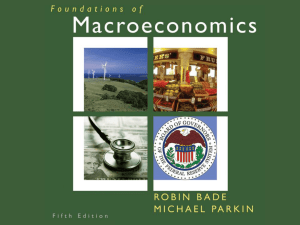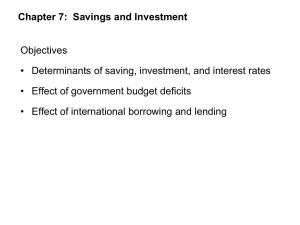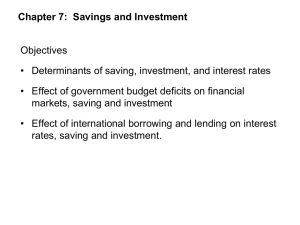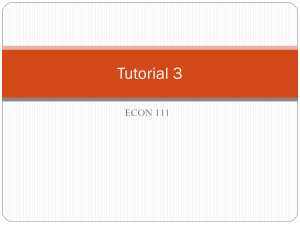The Market for Loanable Funds
advertisement
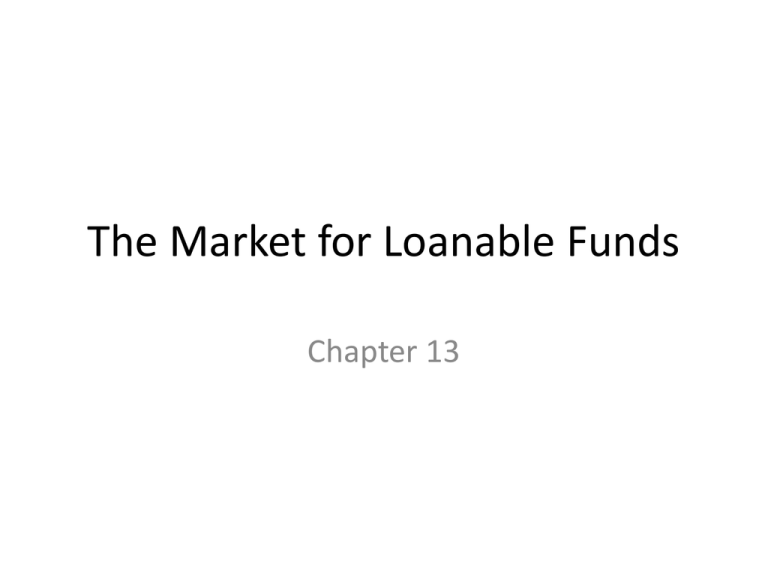
The Market for Loanable Funds Chapter 13 The Market for Loanable Funds • Financial markets coordinate the economy’s saving and investment in the market for loanable funds. • Loanable funds refers to all income that people have chosen to save and lend out, rather than use for their own consumption. The Supply and Demand of Loanable Funds •The supply of loanable funds comes from people who have extra income they want to save and lend out (savings). •The demand for loanable funds comes from households and firms that wish to borrow to make investments (borrowing) . Market for Loanable Funds... Real Interest Rate Supply (savings) 4% Demand (borrowing) 0 $1,000 Loanable Funds (in billions of dollars) Supply and Demand for Loanable Funds The interest rate is the price of the loan. • It represents the amount that borrowers pay for loans and the amount that lenders (savers) receive on their saving. • As interest rates rise savers (suppliers) will be more willing to save and vice versa. • As interest rates fall borrowers (demanders) will be more willing to borrow and vice versa. • Market for Loanable Funds Real Interest Rates 6% Quantity of loanable funds supplied 1400 Quantity of loanable funds demanded 600 5% 1200 800 4% 1000 1000 3% 800 1200 2% 600 1400 Taxes and Saving •Taxes on interest income substantially reduce the future payoff from current saving and, as a result, reduce the incentive to save (supply curve shifts left). The result will be higher interest rates and smaller investment. •If a change in tax law encourages greater saving (supply curve shifts right), the result will be lower interest rates and greater investment. Harcourt, Inc. items and derived items copyright © 2001 by Harcourt, Inc. An Increase in the Supply of Loanable Funds... Interest Rate Supply, S1 S2 1. Households decide to save more of their income. 4% 3% Demand 2. ...which reduces the equilibrium interest rate... 0 $1,000 Loanable Funds $1,200 (in billions of dollars) 3. ...and raises the equilibrium quantity of loanable funds. Taxes and Investment • A change in tax laws can encourage greater investment (a reduction in the capital gains tax). • This would shift the demand curve right and the result will be higher interest rates and greater saving. Harcourt, Inc. items and derived items copyright © 2001 by Harcourt, Inc. An Increase in the Demand for Loanable Funds... Interest Rate 6% 5% 2. ...which raises the equilibrium interest rate... 0 Supply 1. An investment tax credit increases the demand for loanable funds... D2 Demand, D1 $1,400 $1,200 Loanable Funds (in billions of dollars) 3. ...and raises the equilibrium quantity of loanable funds. Government Budget Deficits and Surpluses • • • Government borrowing to finance its budget deficit reduces the supply of loanable funds available to finance investment by households and firms. Interest rates rise and investment falls. This fall in investment is referred to as crowding out. The deficit borrowing crowds out private borrowers who are trying to finance investments. Harcourt, Inc. items and derived items copyright © 2001 by Harcourt, Inc. The Effect of a Government Budget Deficit... Interest Rate S2 6% 5% 2. ...which raises the equilibrium interest rate... $800 $1,200 0 3. ...and reduces the equilibrium quantity of loanable funds. Supply, S1 1. A budget deficit decreases the supply of loanable funds... Demand Loanable Funds (in billions of dollars)

